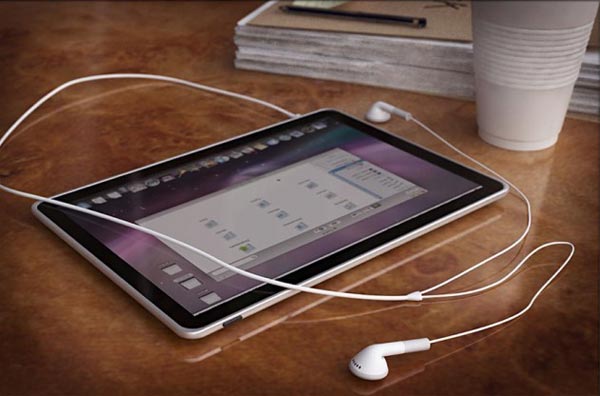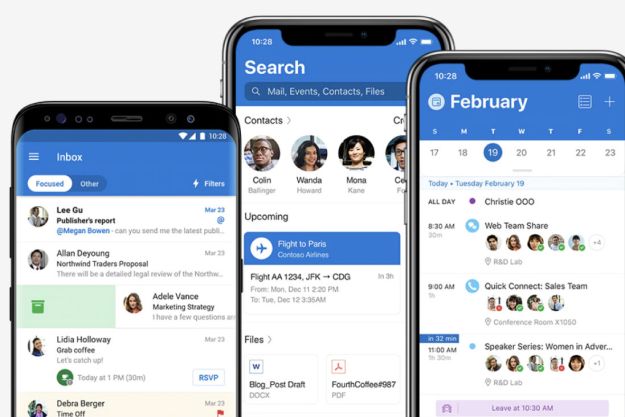
After attending CES earlier this month, it became clear that Apple’s iSlate tablet PC is going to come out about a year too early for the perfect match of technology and services. The good news is that will immediately be able to point us to the second generation of this product, but it also helps explain some of the rumors floating around about it. Let’s talk about the risks of this device, the hardware and features that we believe will be in it, and what the second generation device is likely to improve on this week as we speculate about the iSlate launch.
Before diving in, however, it’s worth pausing to note though that Apple is the one company that can present a device that isn’t yet perfect and have us all salivating over it. On the one hand, I wish more firms had this skill, but then on the other, if they did, we’d likely be broke most of the time moving from feeding frenzy to feeding frenzy. So I’m not suggesting the iSlate will suck – only that it will get better over time, and that this go around, we can likely anticipate some of just how it will do so. Here, I’m going to speculate on what the iSlate should be based on, what technology is ready to go, and the rumors that have surrounded the device. We’ll start with the device itself, mention the risks, then move on to the services, and close out by talking about the following generation.
 iSlate Hardware
iSlate Hardware
Obviously the Apple iSlate will be thin, use a 10” screen, and be touch-enabled. Everything suggests an appearance like an iPhone, albeit with much more viewable screen area. It seems likely it will either be based on NVIDIA’s Tegra platform and/or on an ARM A9 derivative that has secretly been created inside of Apple. In either case it will be strong on graphics performance. Battery life will need to be at least 4 hours or it will get pounded in reviews and there should be a way to get it to the 10 hour ideal target for this class device.
The best display currently being manufactured in volume for the device is OLED, but these are really expensive at this size, suggesting that Apple may offer two versions of the device – one with OLED and one without. I’ve been told that Apple has locked up virtually all of the OLED displays and most all LCD displays in this size class. This could help explain the mixed rumors on price with some in the $1,000 range and some much lower. The OLED display could add up to $500 to the price – these screens aren’t cheap. Otherwise, it will have a full cell phone technology load and come with a data plan much like an iPhone does. It would seem likely, just as it was with the iPhone, that an iPod version could launch in the August/September timeframe.
Expect adapters that will allow it to work with some existing iPod/iPhone accessories and that a line of unique accessories will come up around it.
 iSlate Risks
iSlate Risks
The risk Apple is taking is with the size of the device. Gizmos in the 10” spectrum have always fallen into a range of too big to carry and too small to work on. Netbooks have clearly helped validate this size, but even they seem to be drifting to 11” and larger display areas going forward. It might have been less risky to do a 5” or 7” widescreen model first, because they are much more portable and the OLED displays much less expensive. It is possible that Apple will announce a line of products because it is hard to imagine that the company doesn’t recognize the risk in this big a jump, and that the technology graveyard is full of products that have used 10” screens. Still, as the first 3rd generation reader, and I’m in love with my 11” Kindle, they may have alternatively hit on the ideal size for a slate that is also an eBook reader. We’ll see.
 The First iSlate Services
The First iSlate Services
Obviously services like MobleMe and iTunes will be on the device as will the Kindle reader out of the application store. However, at CES, the best eReader/service for a device that has the capability of the iSlate would be Blio, which currently doesn’t have an actual physical device associated with it and was showcased on the stage during the Microsoft keynote. This service is the only one that fully anticipated a device like the iSlate which effectively is a forerunner to the true 3rd generation eReaders.
If you aren’t following the eReader generations, the first generation was just text and defined by the Kindle; the second formatted text (columns etc.) and defined by the Plastic Logic Que and Hearst Skiff and the first 3rd generation product could be the iSlate, which adds color, multimedia, and the potential to blend audiobooks with text. Blio is the only service I’ve run into that embraces this 3rd generation concept and it, assuming it is available on the iSlate, will make that device shine.
But Blio is for books and professional media and this device has to embrace Web media as well. Here, another product called Scribd fills the gap by connecting users to social cloud-based publishing on the network. This service is currently growing 400% faster than traditional content yet no one else has targeted a service at eReaders. Apple is clearly Web aware, and I doubt they’d miss this Web content as a necessary feature.
OnLive would go well with this device, which has enough screen size to potentially be an OnLive client and open it to game capabilities that go beyond what you would typically get on a gadget of this class. By the time the iSlate releases, OnLive should be running and the combination could blow the doors off the capabilities of any other device in its class.
While I don’t expect all of these to be talked about on the teaser launch this month or even announced until the device is ready for market around May, I do expect these features or services like them to be available on the first generation device. But now, let’s move to the iSlate’s second version, and see what the future has in store.
 iSlate – Second Generation (2G)
iSlate – Second Generation (2G)
It is funny to be speculating about the second generation of a product before the first generation is clearly known. However, the problem with the first generation truly being a 3rd generation reader is the display. OLED is simply too expensive, too unreliable, and too short-lived for a general use device. This is the reason you see it in cell phones and devices like the Zune, but nothing larger. It also doesn’t do that well in bright light, being better than LCD, but not providing the performance you’d need for a eReader. At least two technologies coming to market will fix this and both should be available in volume shortly after the iSlate launches – the problem being the “after” part. The first is the Mirasol display technology from Qualcomm which is based on MEMS micro machines and the Pixel Qi display technology which blends ePaper and LCD capability. Both are better for a true 3rd generation reader because they display text more in line with a Kindle and yet can still do the multimedia stuff required of this next generation. They are both substantially less expensive than OLED as well and a lower price for the fully-featured iSlate clearly wouldn’t hurt either.
So my expectation is that the iSlate 2.0 will move to one of these displays, likely get some more memory, maybe a 4G radio, and then it will be near perfect.
Wrapping Up
Before we get sucked into Steve Jobs’ reality distortion field and fall in love with whatever he shows us at the end of the month, I urge you to stop and think about what you’d like in a device in this class and that way you can more objectively decide if you want this one. As always, I’ll recommend that even if you fall in love with the first generation, wait a couple of months for someone else to work the bugs out of it before buying one, but not too long as, if it is hot, it will likely sell out for Christmas. Let me know if you are chomping at the bit for this thing or think there was anything I missed – either way, we’ll hopefully all be in for a surprise when the device is announced at the end of this month.
Editors' Recommendations
- Hurry! This iMac is at its cheapest ever price right now
- The biggest threat to the MacBook this year might come from Apple itself
- iMac deals: New, renewed and refurbished iMac computers
- How to use iMessage on Windows
- Best Apple deals: Save on AirPods, Apple Watch, iPad, MacBook






